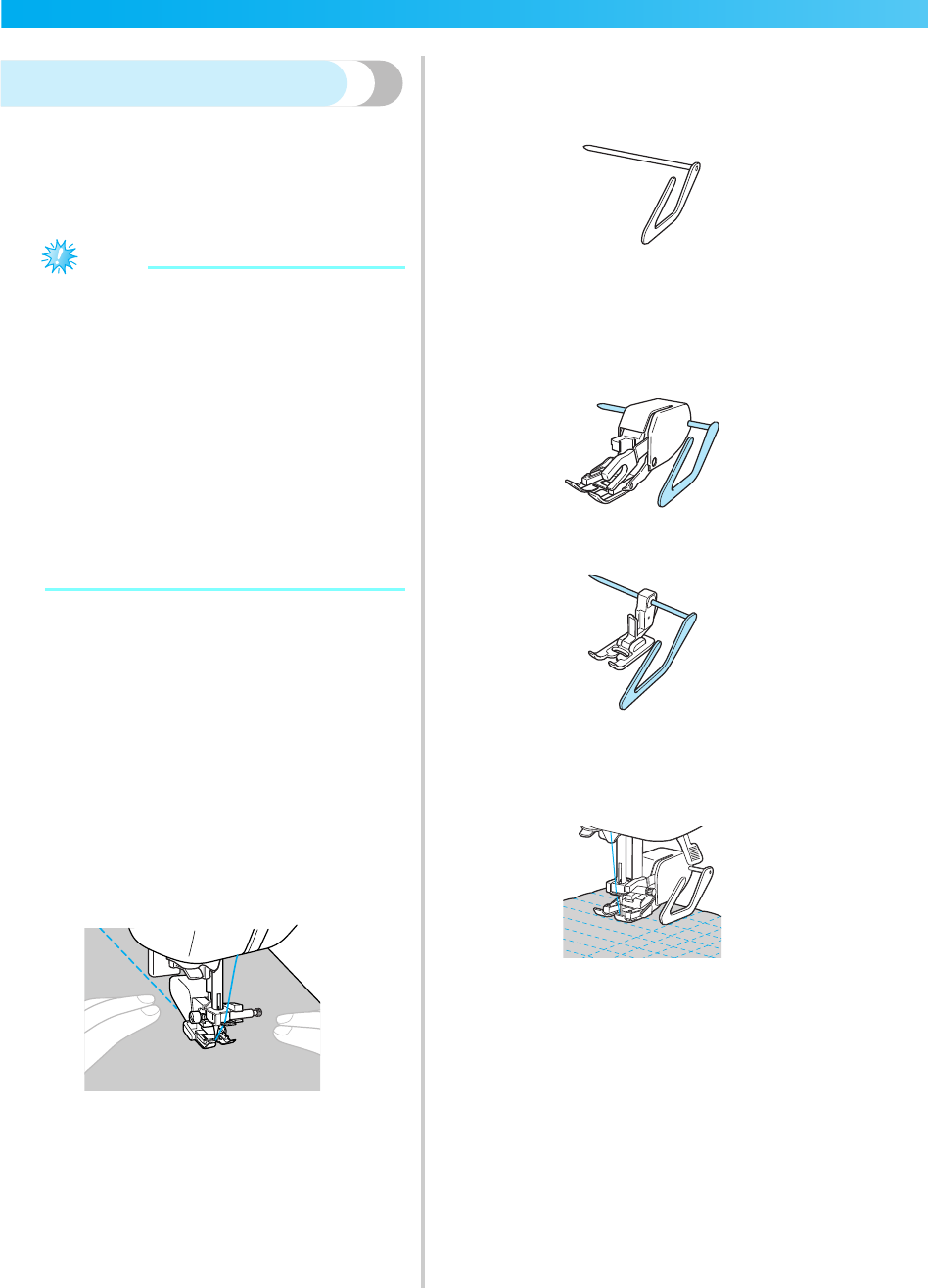
UTILITY STITCHES — — — — — — — — — — — — — — — — — — — — — — — — — — — — — — — — — — — — — — — — — — —
—
104
Quilting
Sandwiching batting between the top and bottom
layers of fabric is called “quilting”. Quilts can easily
be sewn using the walking foot and the quilting
guide.
Note
z Thread the needle manually when using the
walking foot, or only attach the walking foot
after threading the needle using the needle
threader.
z When sewing with the walking foot, sew at a
speed between slow and medium.
z When quilting, use a 90/14 home sewing
machine needle.
z The walking foot can only be used with
straight or zigzag stitch patterns. Reverse
stitches cannot be sewn with the walking
foot. Only select straight or zigzag stitch
patterns with reinforcement stitches. For
details, refer to “Stitch Settings” (page 138).
a
Baste the fabric to be quilted.
b
Attach the walking foot.
• For details, refer to “Using the walking foot”
(page 44).
c
Select a stitch.
• For details, refer to “Selecting Stitching”
(page 70).
d
Place one hand on each side of the presser
foot, and hold fabric taut while sewing.
■ Using the quilting guide
Use the quilting guide to sew parallel stitches that
are equally spaced.
a
Insert the stem of the quilting guide into the
hole at the rear of the walking foot or presser
foot holder.
Walking foot
Presser foot holder
b
Adjust the stem of the quilting guide so that
the guide aligns with the seam that has already
been sewn.


















